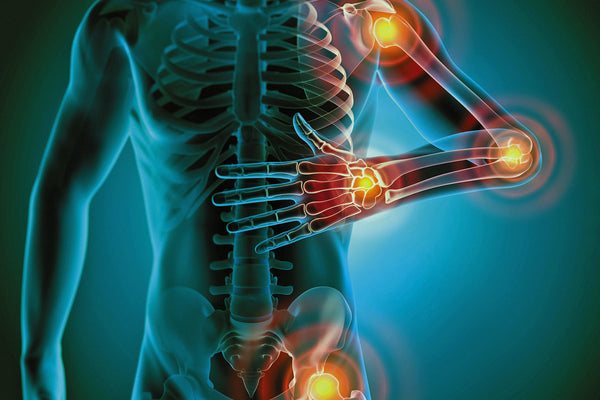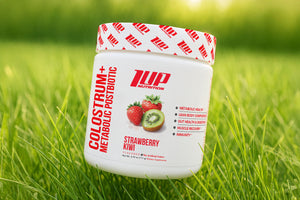Inflammation is the body's automatic response to insult or injury, and it serves as a way of protecting itself from trauma, infection, or anything else that stresses the body.
Certain proteins, called inflammatory markers, are released into the bloodstream during inflammation. If the concentrations of these proteins increase or decrease by at least 25%, they can be used as systemic inflammatory markers.
Inflammatory markers are a useful tool for monitoring inflammation in the body. The most common inflammatory markers are:
- C-reactive protein (CRP)
- Erythrocyte sedimentation rate (ESR)
- Plasma viscosity (PV)
- Procalcitonin (PCT)
C-reactive protein is often thought to be superior for infections; however, little research has been conducted that compares inflammation markers against each other. A 2019 study found that CRP marginally outperformed both ESR and PV.[1]
There are several other inflammatory markers, including serum amyloid A, cytokines, alpha-1-acid glycoprotein, and haptoglobin; however, a combination of high cost, limited availability, and lack of standardization limit their use in a practical day-to-day setting. This is why CRP, ESR, and PCT are the most commonly used inflammatory biomarkers.
What Are the Normal Values for CRP, ESR, & PCT?
- CRP: most people without an underlying health issue have a CRP level less than 3 mg/L and nearly always less than 10 mg/L.
- ESR: the normal range is 0-22 mm/hr for men and 0-29 mm/hr for women
- PV: the normal range for adults is 1.50-1.72 mPA.
- PCT: levels below 0.15 ng/mL make a diagnosis of significant bacterial infection unlikely
Testing multiple inflammatory markers has become more common in recent times; however, researchers find that doing so does NOT improve the ability to rule out disease. It DOES increase the risk that at least one of the tests will give a false-positive, compared using a single test.[1]
Using Biomarkers for Inflammation
Doctors use inflammatory marks in a few different ways.
First, they can help doctors during the initial diagnostic process. Abnormal values may indicate that your condition is likely to be partly caused by inflammation.
Second, inflammatory biomarkers can also be used to monitor the level of a person’s disease activity, which could affect which treatment your doctor suggests.
Third, these biomarkers could be used to give an idea about a disease’s prognosis.
One major limitation of using inflammatory biomarkers is that they simply tell you that you have inflammation…they don’t say what is causing the inflammation.
Inflammation: Good or Bad?
Inflammation often gets a bad rap, as it is something that is bad or should be completely eliminated.
But, as with many things in life, it’s not quite that simple as saying inflammation is “good” or “bad.”
Truth be told, inflammation is necessary and beneficial in certain instances, such as when you cut your finger, scrap your knee, or lift really heavy weights.
During these instances of acute trauma, the inflammatory response kicks into gear, flooding the body with important chemicals necessary to protect, heal, and repair the damaged area.
When inflammation goes “bad” is when the inflammatory response never gets a chance to “calm down.’ This leads to chronic systemic inflammation, and chronic inflammatory diseases are the most significant cause of death in the world.[2]
Examples of chronic inflammatory diseases include:
- Obesity
- Diabetes
- Heart disease
- Stroke
- Chronic respiratory diseases
- Cancer
Steps To Lessen Inflammation
To promote a healthy inflammatory response, there are several important lifestyle decisions you can make on a daily basis:
- Good nutrition: eat foods with anti-inflammatory properties, including fruits, vegetables, fatty fish, nuts & seeds
- Quality sleep: even a single night of poor sleep can increase levels of inflammatory biomarkers[3]
- Regular exercise: maintains a healthy body weight, improves cardiometabolic health, and lowers risk of chronic inflammatory diseases
- Antioxidants: found in fruits, vegetables, nuts, seeds, etc can help combat free radicals and oxidative stress, which can help reduce inflammation
- Supplements: Greens & Reds Superfoods, Omega-3s, Curcumin, and even probiotics may be helpful in reducing inflammation.
References
- Watson, Jessica et al. “Use of multiple inflammatory marker tests in primary care: using Clinical Practice Research Datalink to evaluate accuracy.” The British journal of general practice : the journal of the Royal College of General Practitioners vol. 69,684 (2019): e462-e469. doi:10.3399/bjgp19X704309
- Pahwa R, Goyal A, Jialal I. Chronic Inflammation. [Updated 2021 Sep 28]. In: StatPearls [Internet]. Treasure Island (FL): StatPearls Publishing; 2022 Jan-. Available from:https://www.ncbi.nlm.nih.gov/books/NBK493173/
- Elsevier. "Loss Of Sleep, Even For A Single Night, Increases Inflammation In The Body." ScienceDaily. ScienceDaily, 4 September 2008. <www.sciencedaily.com/releases/2008/09/080902075211.htm>
- Plaza-Díaz J, Ruiz-Ojeda FJ, Vilchez-Padial LM, Gil A. Evidence of the Anti-Inflammatory Effects of Probiotics and Synbiotics in Intestinal Chronic Diseases. Nutrients. 2017;9(6):555. Published 2017 May 28. doi:10.3390/nu9060555






